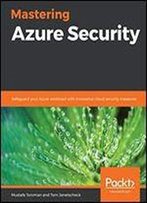
Python High Performance - Second Edition
by Gabriele Lanaro /
2017 / English / AZW3
1.8 MB Download
Key Features
Identify the bottlenecks in your applications and solve them using the best profiling techniques
Write efficient numerical code in NumPy, Cython, and Pandas
Adapt your programs to run on multiple processors and machines with parallel programming
Book Description
Python is a versatile language that has found applications in many industries. The clean syntax, rich standard library, and vast selection of third-party libraries make Python a wildly popular language.
Python High Performance is a practical guide that shows how to leverage the power of both native and third-party Python libraries to build robust applications.
The book explains how to use various profilers to find performance bottlenecks and apply the correct algorithm to fix them. The reader will learn how to effectively use NumPy and Cython to speed up numerical code. The book explains concepts of concurrent programming and how to implement robust and responsive applications using Reactive programming. Readers will learn how to write code for parallel architectures using Tensorflow and Theano, and use a cluster of computers for large-scale computations using technologies such as Dask and PySpark.
By the end of the book, readers will have learned to achieve performance and scale from their Python applications.
What you will learn
Write efficient numerical code with the NumPy and Pandas libraries
Use Cython and Numba to achieve native performance
Find bottlenecks in your Python code using profilers
Write asynchronous code using Asyncio and RxPy
Use Tensorflow and Theano for automatic parallelism in Python
Set up and run distributed algorithms on a cluster using Dask and PySpark
About the Author
Dr. Gabriele Lanaro has been conducting research to study the formation and growth of crystals using medium and large-scale computer simulations. In 2017, he obtained his PhD in theoretical chemistry. His interests span machine learning, numerical computing visualization, and web technologies. He has a sheer passion for good software and is the author of the chemlab and chemview open source packages. In 2013, he authored the first edition of the book “High Performance
Python Programming”.
I'd like to acknowledge the support from Packt editors, including Vikas Tiwari. I would also like to thank my girlfriend, Harani, who had to tolerate the way-too-long writing nights, and friends who provided company and support throughout. Also, as always, I'd love to thank my parents for giving me the opportunity to pursue my ambitions.
Lastly, I would like to thank Blenz coffee for powering the execution engine of this book through electricity and caffeine.
Table of Contents
Benchmarking and profiling
Pure Python Optimization techniques
Fast array operations
C performance with Cython
Exploring Compilers
Implementing concurrency
Parallel processing
Distributed Processing
Designing for High Performance











